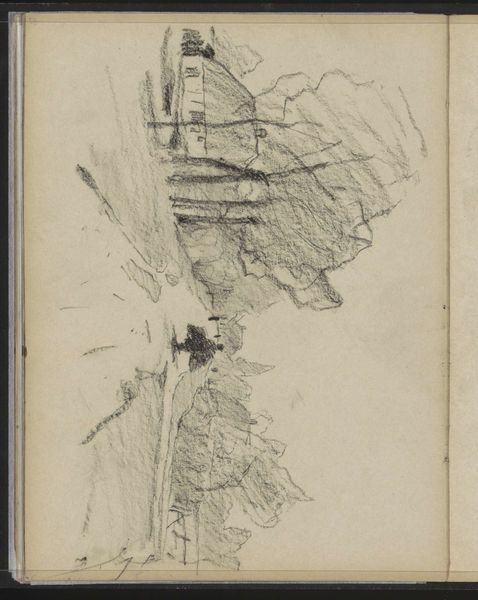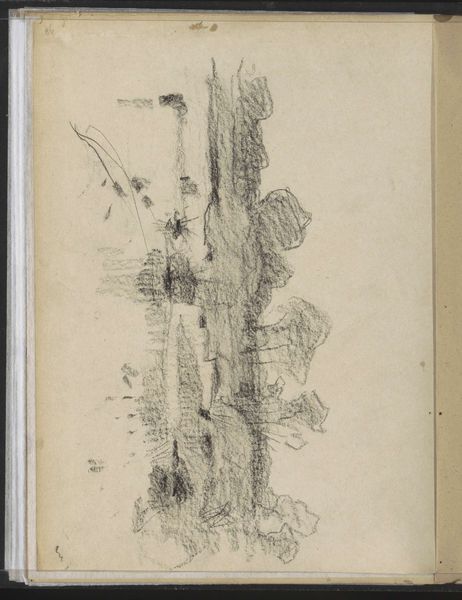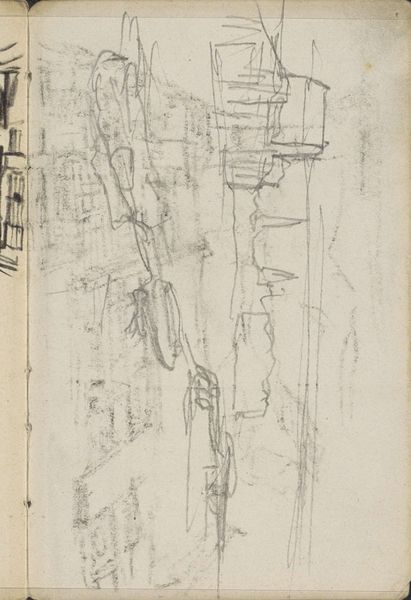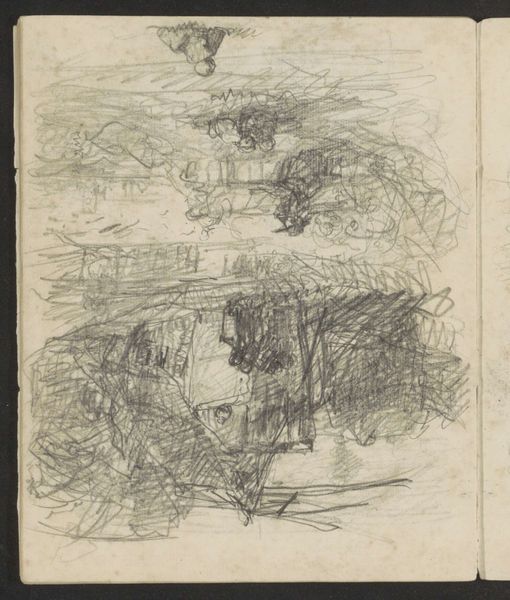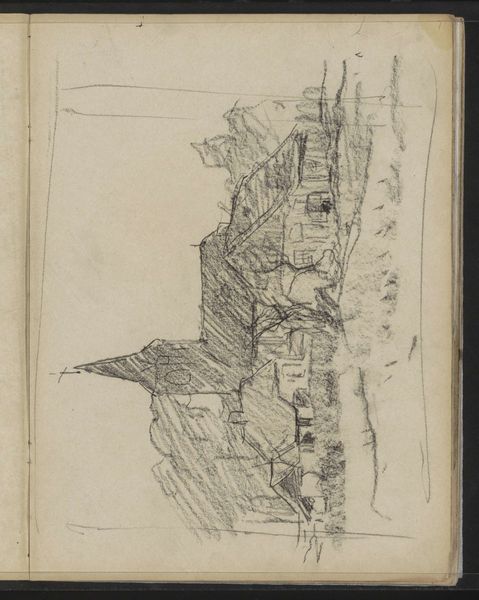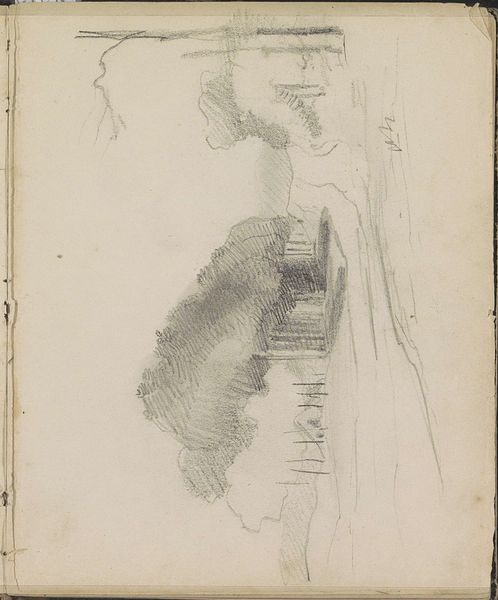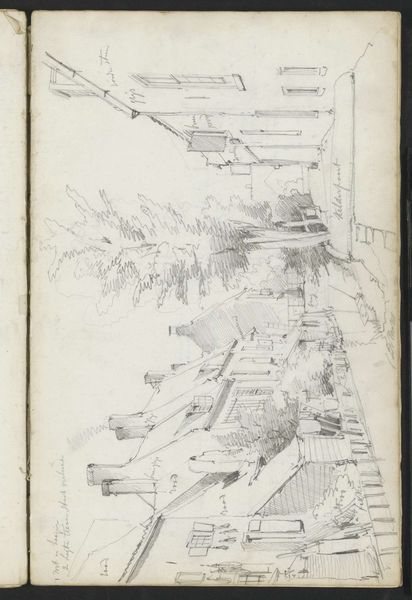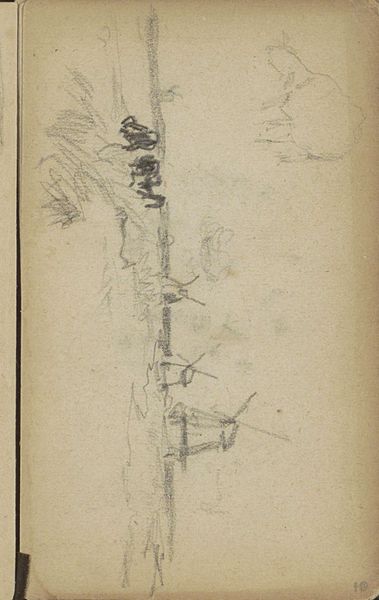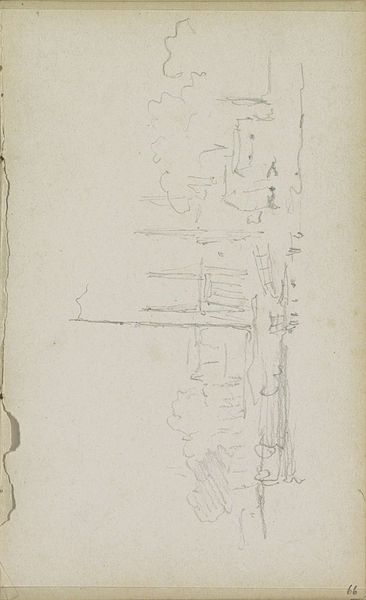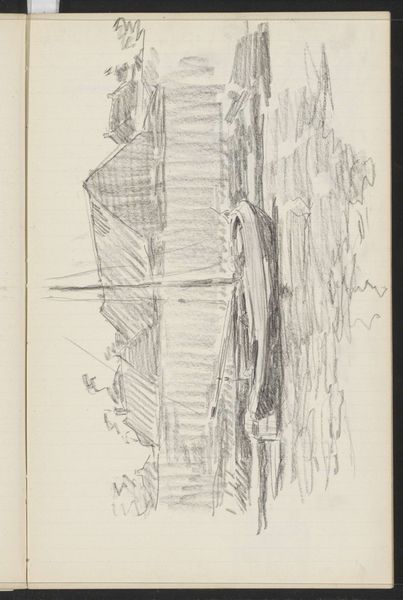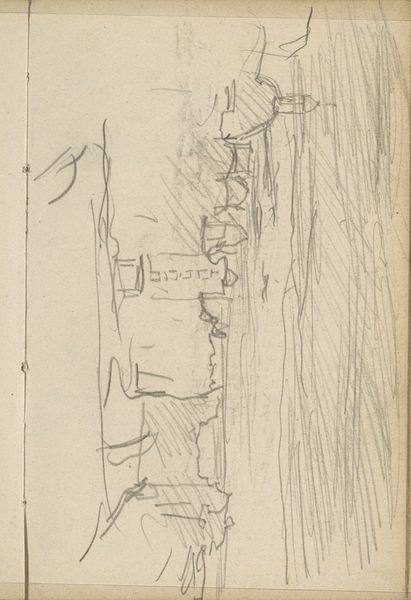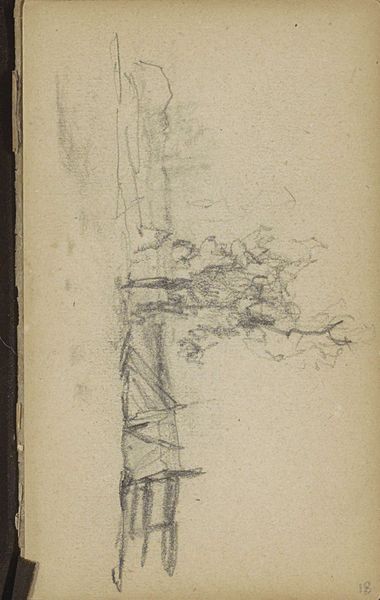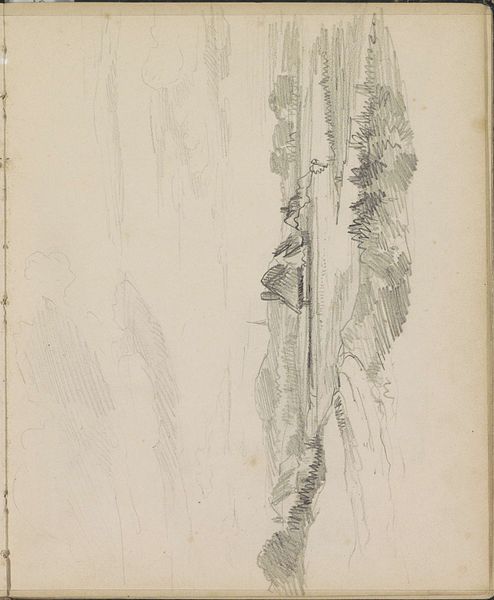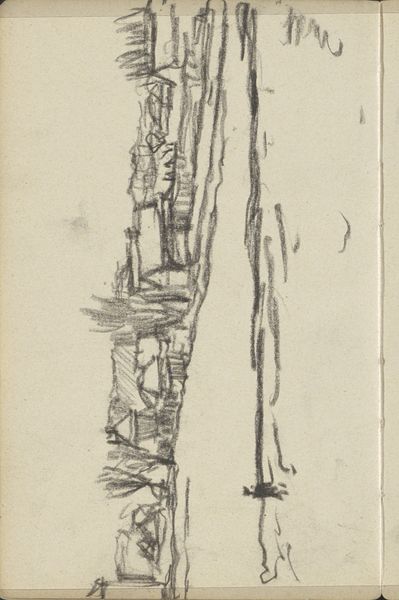
drawing, pencil
#
drawing
#
impressionism
#
pen sketch
#
landscape
#
pencil
#
realism
Copyright: Rijks Museum: Open Domain
Editor: Here we have Willem Witsen's "Gezicht op Huis Diepenheim," a pencil drawing from around 1887 or 1888. There's a kind of melancholy mood to it, with the delicate lines and muted tones suggesting a quiet solitude. What do you see in this piece, particularly in relation to its historical context? Curator: It’s more than just a melancholic landscape, it’s a portrait of power. The house, rendered in such stark detail against the softness of the surrounding nature, speaks to the inherent imbalance between human construction and the organic world. Consider the late 19th century in the Netherlands – a period of increasing industrialization and urbanization, impacting traditional rural landscapes. Witsen, often associated with the Tachtigers literary movement, was grappling with the loss of an idealized past. Does this house represent tradition, and at whose expense was it built? Editor: That's a really interesting way to look at it! I was focused on the aesthetics, but now I'm thinking about the social commentary. Curator: Exactly! And that invites us to explore its contemporary relevance. How do we see such imbalances reflected in today’s world? Who benefits from the construction of these power structures, and who bears the burden? Consider the implications regarding land ownership and access. Does that change how you view the image? Editor: Absolutely, it's not just a pretty picture anymore. The sketch invites questions of privilege and the changing landscape, literally and figuratively. It makes me think about modern land development. Curator: Precisely. Witsen offers us a mirror, reflecting not just the Dutch countryside, but also our own complicity within these ongoing social and environmental narratives. It prompts reflection on issues like climate gentrification, inviting us to act with the understanding that aesthetic preferences have moral and ethical ramifications. Editor: This has completely reshaped my understanding. Thank you! Curator: My pleasure. The true value of art lies not just in its beauty, but in its power to ignite dialogue and drive change.
Comments
No comments
Be the first to comment and join the conversation on the ultimate creative platform.
